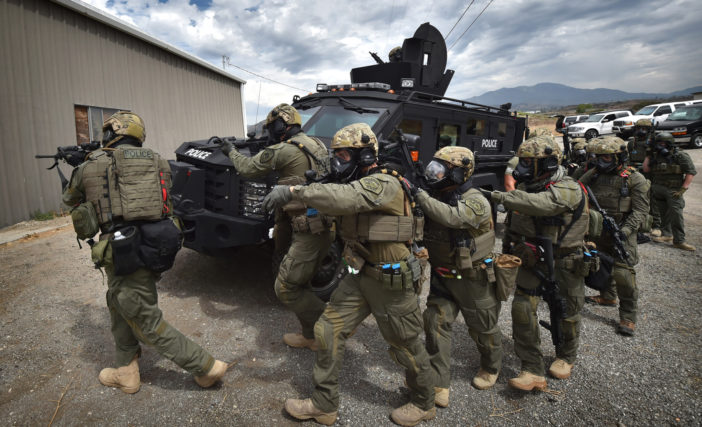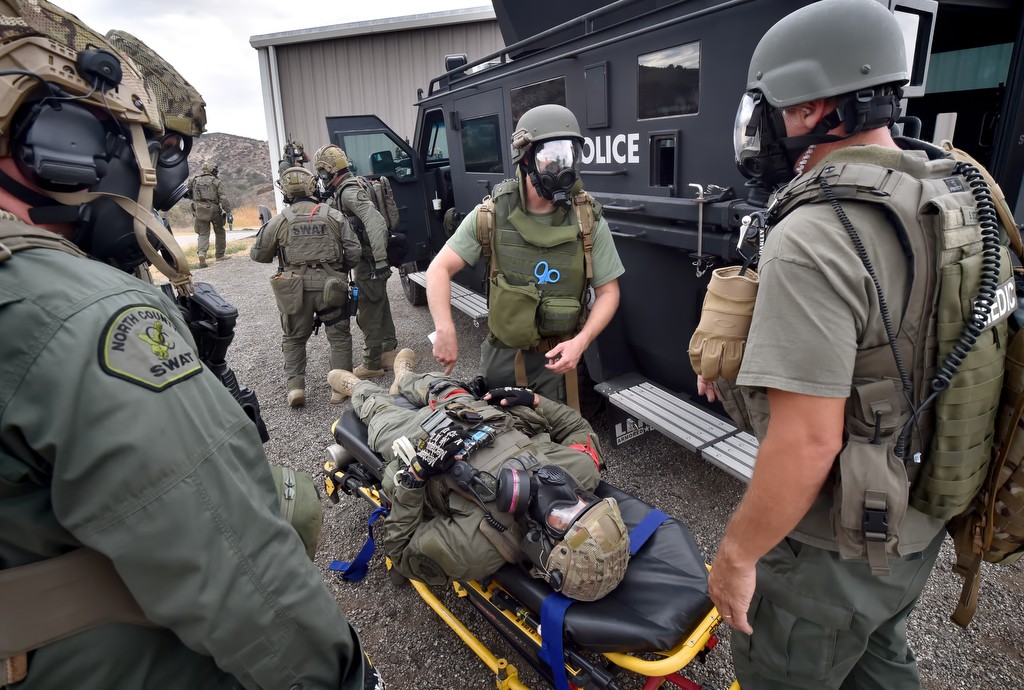They snake through a maze of doors and narrow hallways, holding their weapons and on high alert for anybody or anything in their path.
Outfitted with bullet-proof vests and helmets, they are mindful of every window and door, as they inch forward and ever so carefully turn corners.
Every movement of every member of the team is scrutinized by the SWAT Commanders and training cadre watching from a catwalk above.
The operation is just one element of a recent training day for North County SWAT.
This particular drill involves the safe apprehension of a distraught man who shot someone and won’t respond to demands from the SWAT team to come out with his hands up.
The suspect eventually is apprehended, finishing the drill.
A period of debriefing follows, just as it would if this were a real-life situation.
What did they do right? What could they have done better?
Then, they do it again … and again.
Made up of police officers from Fullerton, La Habra, Brea, Placentia, La Palma and Cal State Fullerton, as well as paramedics from the Brea and Fullerton fire departments, North County SWAT responds to high-risk incidents that are typically beyond the scope of what officers on patrol are equipped to handle.
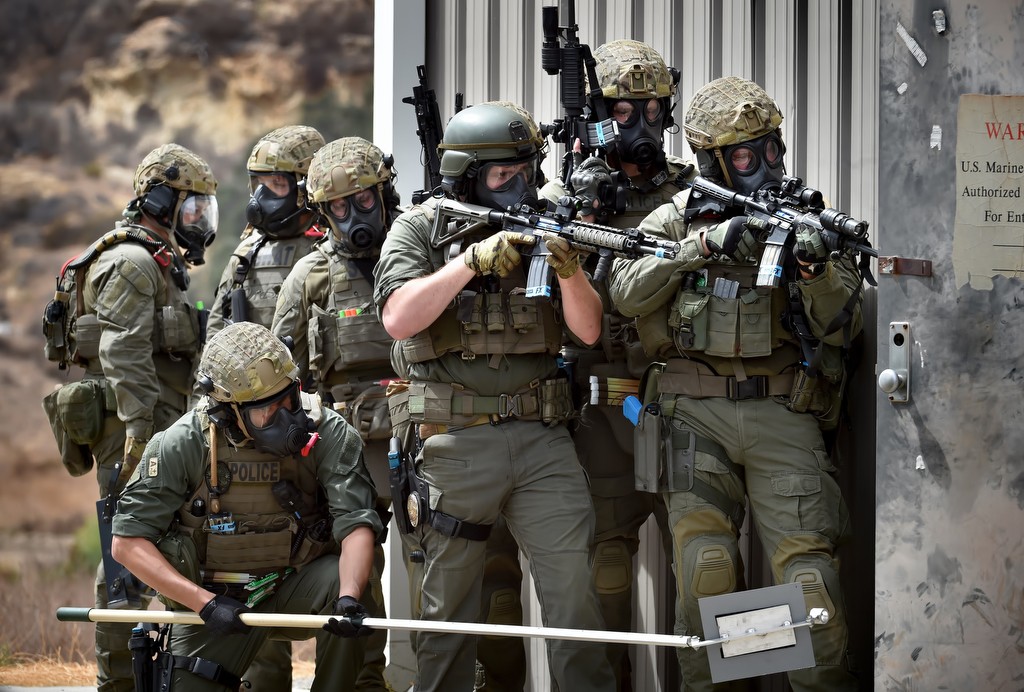
North County SWAT officers use a mirror to check the doorway before entering the building during a SWAT drill.
Photo by Steven Georges/Behind the Badge OC
High-risk search warrants, active shooter situations, civil unrest, dignitary protection and hostage situations all would draw a response from North County SWAT, which responds to about 10 calls a year.
Lieutenants Mike Chocek and Dean Capelletti, who are with Fullerton and La Habra police departments respectively, say pooling manpower and equipment to form a single SWAT unit offers several advantages.
“By having several different agencies involved, there is a higher likelihood that SWAT officers will be on-duty, working their primary assignment,” Capelletti said. “That gives us a decent pool of team members to initially pull from, greatly reducing our response time to an event. We are able to get important tools and resources to a volatile situation quickly, and when the rest of the team arrives, things are able to run as smoothly as possible.”
Each agency may have a handful of trained SWAT operators, Chocek said, so pooling agencies also equates to higher numbers of SWAT personnel in a single unit.
“It allows us to handle almost any event that happens,” Chocek said. “All the guys carry all their gear in their vehicles and can be at call within minutes, and have … a pulse on what is happening.”
Given budget constraints, joining forces also makes sense financially, with each agency purchasing individual specialized pieces of equipment that are pooled for the team’s use.
Six paramedics each from the Fullerton and Brea fire departments respond to SWAT calls and train with the SWAT unit right alongside officers.
“Our primary concern is these guys, rendering them aid if something happens to them,” said Capt. John Miller of the Fullerton Fire Department. “But we’ve also been on calls where the perpetrator has been injured and we’ve been able to render aid to him/her as well.”

Simulated suspect Juan Negrete, of La Habra PD, walks backward with his hands up as North County SWAT officers get ready to take him into custody as part of a SWAT drill.
Photo by Steven Georges/Behind the Badge OC
North County SWAT puts in 160 hours of training a year, which includes simulating real-life situations and qualifying four times a year on the shooting range.
The team also is equipped with armored vehicles, bullet-proof vests and helmets, an array of lethal and non-lethal weapons, communication gear, gas masks and even a special ambulance that has more features than a traditional one.
The team includes tactical dispatchers, tactical medics, crisis negotiators and snipers.
“Our top priority is public safety and, together, we have just about every element you can have on a SWAT team,” Capelletti said. “This cooperative alliance is a tremendous benefit for each of the communities we serve.”

Nate Garcia in a North County SWAT drill. The blue and yellow colors on the weapons mark them as having simulation rounds.
Photo by Steven Georges/Behind the Badge OC
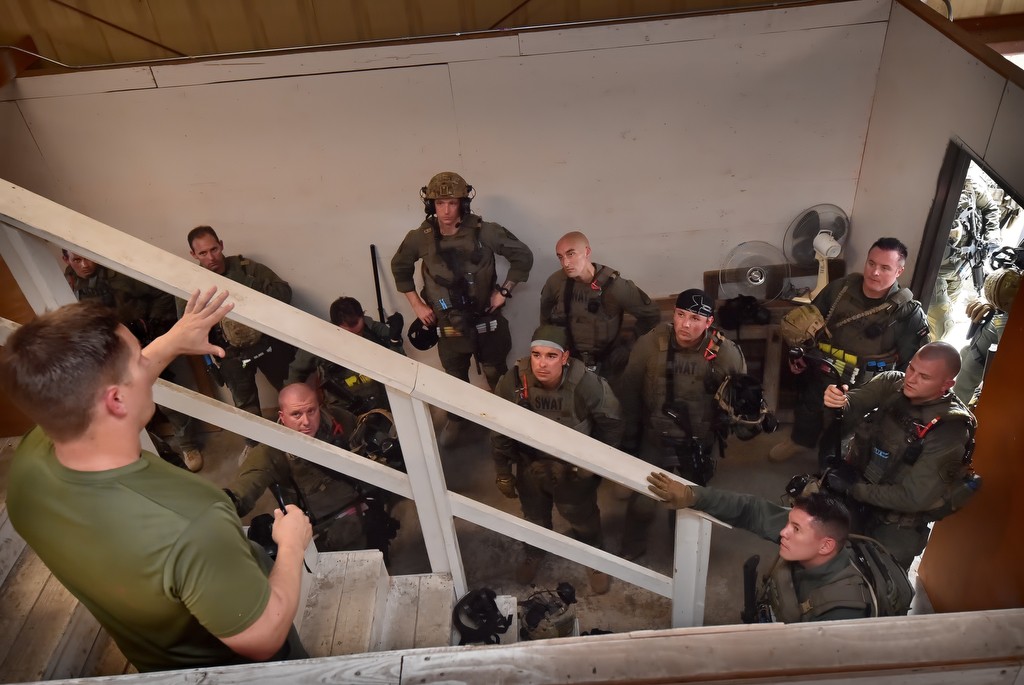
North County SWAT officers review their tactics at the end of each drill. Catwalks are built above the walls so their command staff can view their performance from above.
Photo by Steven Georges/Behind the Badge OC
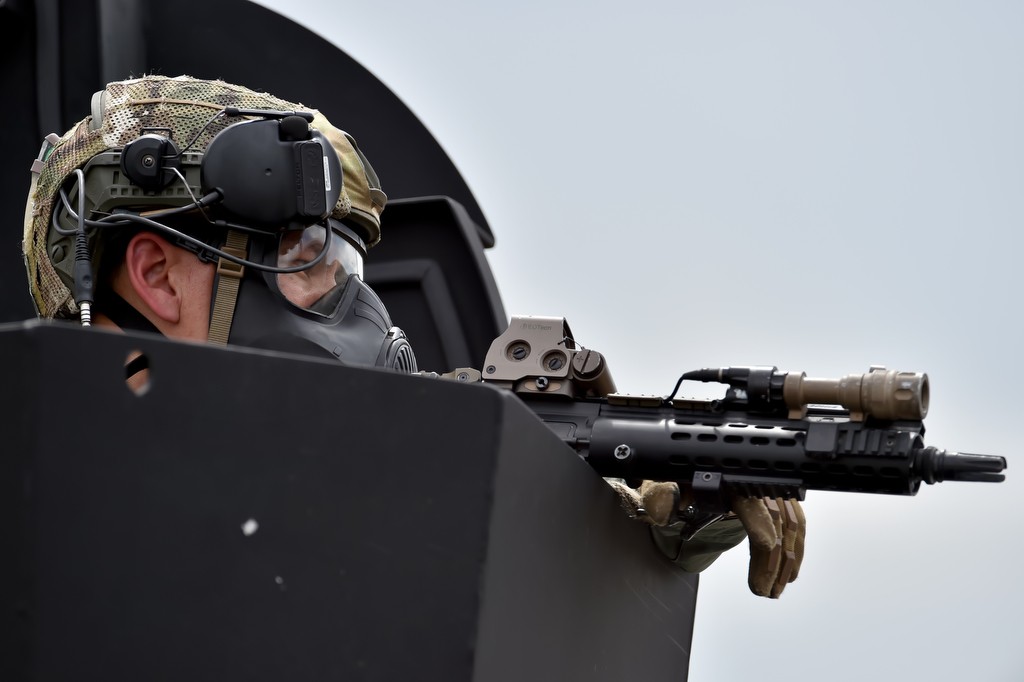
A North County SWAT officer covers the other officers from the turret of a BearCat (SWAT vehicle) during SWAT drills in Irvine.
Photo by Steven Georges/Behind the Badge OC
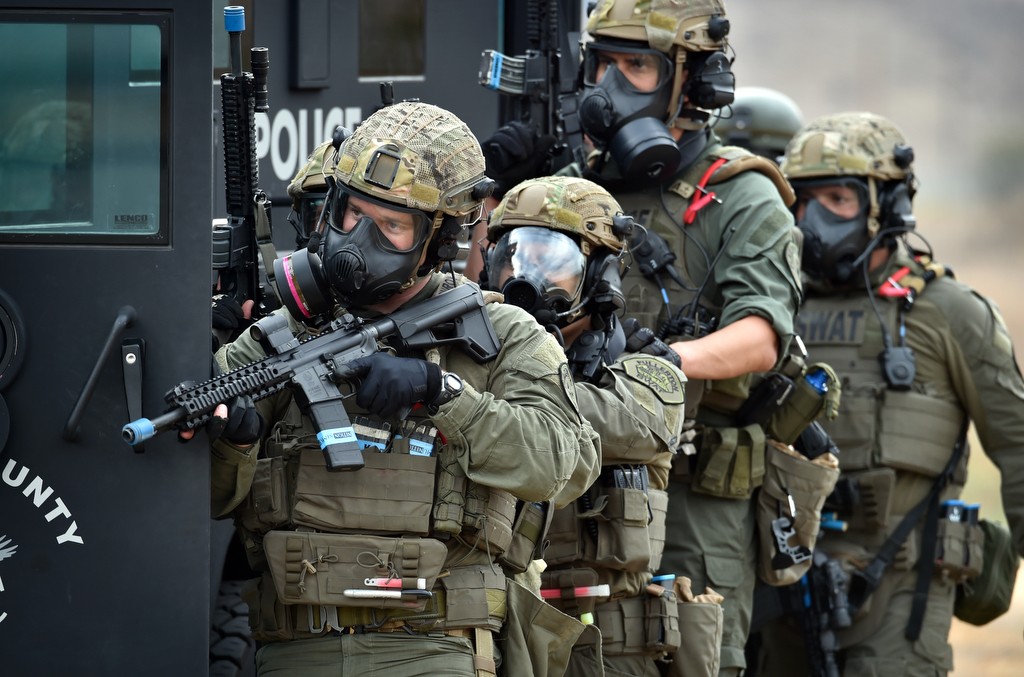
North County SWAT officers approach a building they need to enter from behind a moving BearCat (SWAT vehicle) for protection during a drill.
Photo by Steven Georges/Behind the Badge OC

A North County SWAT officer stands by to take a simulated suspect into custody during a North County SWAT drill.
Photo by Steven Georges/Behind the Badge OC
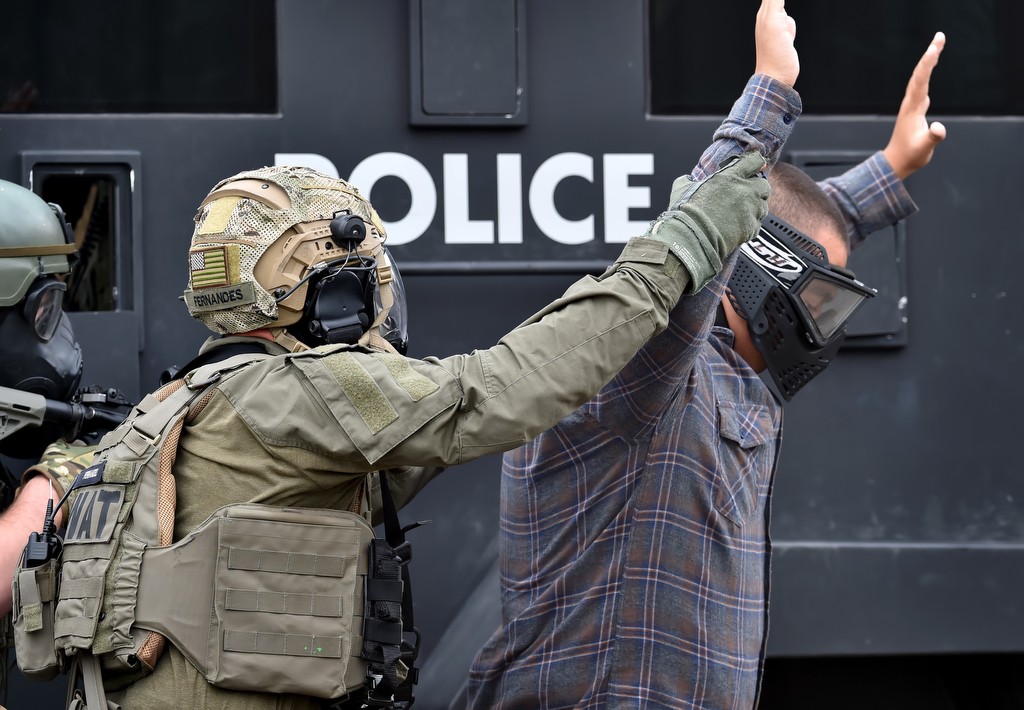
North County SWAT Officer Fernandez takes a simulated suspect into custody during a North County SWAT drill.
Photo by Steven Georges/Behind the Badge OC
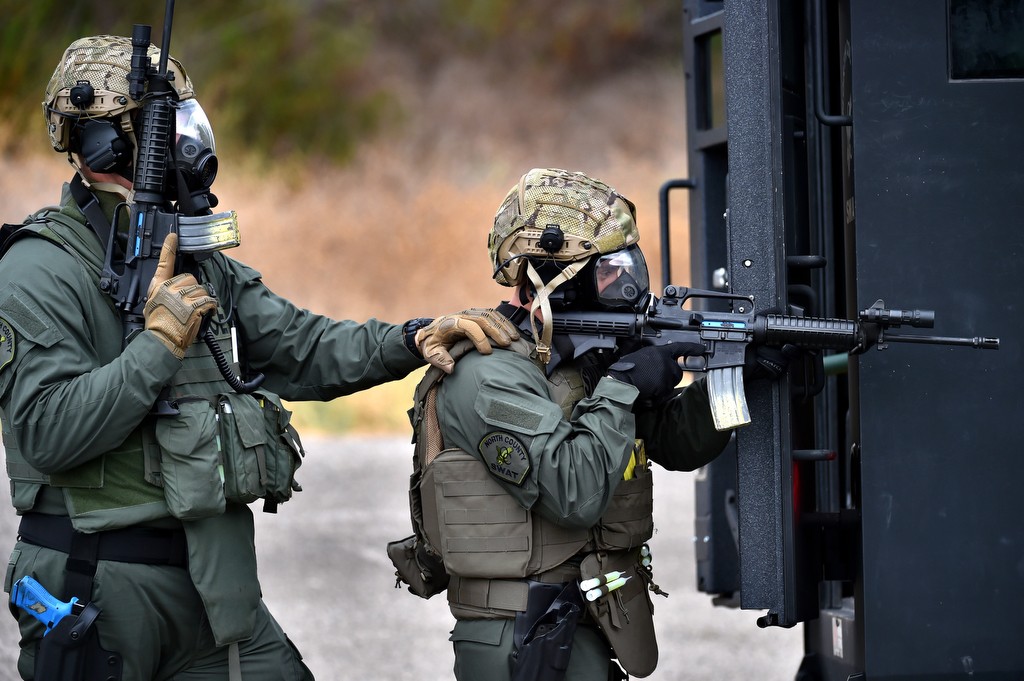
La Habra Officers Kevin. Love, left, and Nate Garcia during a North County SWAT drill. The blue and yellow colors on the weapons mark them as having simulation rounds. Photo by Steven Georges/Behind the Badge OC

North County SWAT members, Fullerton Firefighter/Medic Mike Lemmon and Brea Engineer/Medic Bill Schaefer, right, wait behind the BearCat (SWAT vehicle) for protection as they stand by to receive a simulated wounded officer as other SWAT members, left, get ready to enter a building during a North County SWAT drill in Irvine.
Photo by Steven Georges/Behind the Badge OC
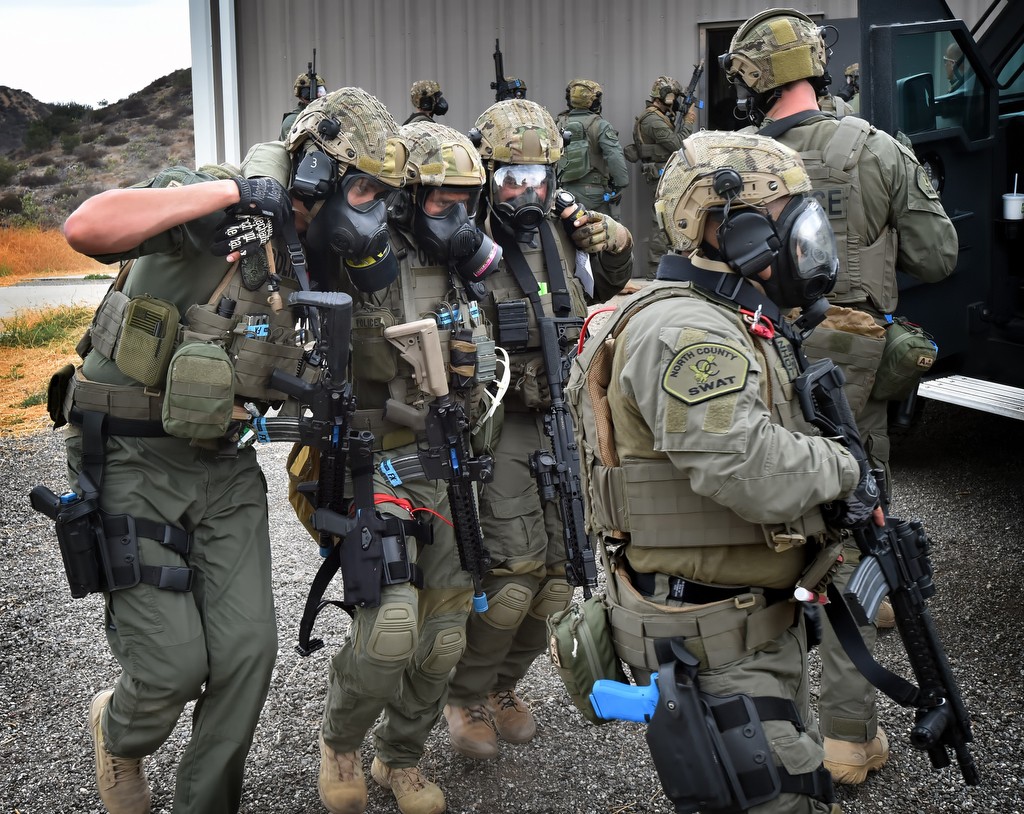
North County SWAT members remove a simulated wounded officer, Placentia Officer Joe Gillis, from the line of fire and to the medics during a drill.
Photo by Steven Georges/Behind the Badge OC
 Behind the Badge
Behind the Badge
